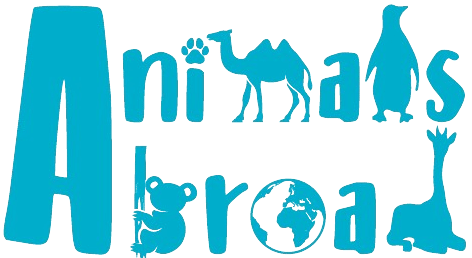The Caprivi Strip is a narrow finger of land in the north-east of Namibia that feels like a different world compared to the rest of the country. Lush, green, and threaded with rivers, it’s a stark contrast to Namibia’s drier landscapes. Bordered by Angola, Zambia, Botswana, and Zimbabwe, the Caprivi is Namibia’s gateway to some of Southern Africa’s most underrated parks.
For us, it was an unexpected highlight of the trip—a quieter, wilder corner of Namibia where rivers rule the land and wildlife roam freely between countries. Over the next few days, we explored two national parks in the area, Bwabwata and Nkasa Rupara National Park, each with its own unique feel and surprises.
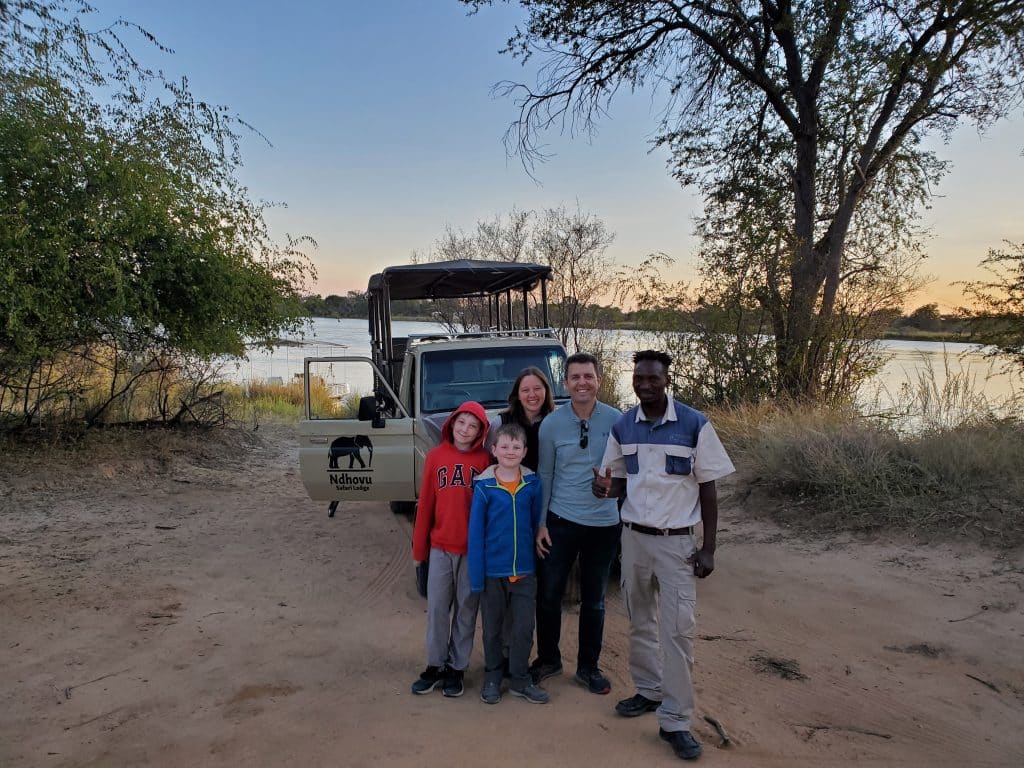
Bwabwata National Park
Bwabwata National Park covers a vast stretch of the Caprivi Strip and is one of Namibia’s most unique conservation areas. It’s not just a national park—it’s also home to thousands of people who live and farm within its borders, making it a place where wildlife and communities coexist. The park is divided into three main sections: Mahango, Buffalo, and Kwando, each offering different landscapes, wildlife sightings, and experiences. While in the area, we explored the Mahango and Buffalo core areas.
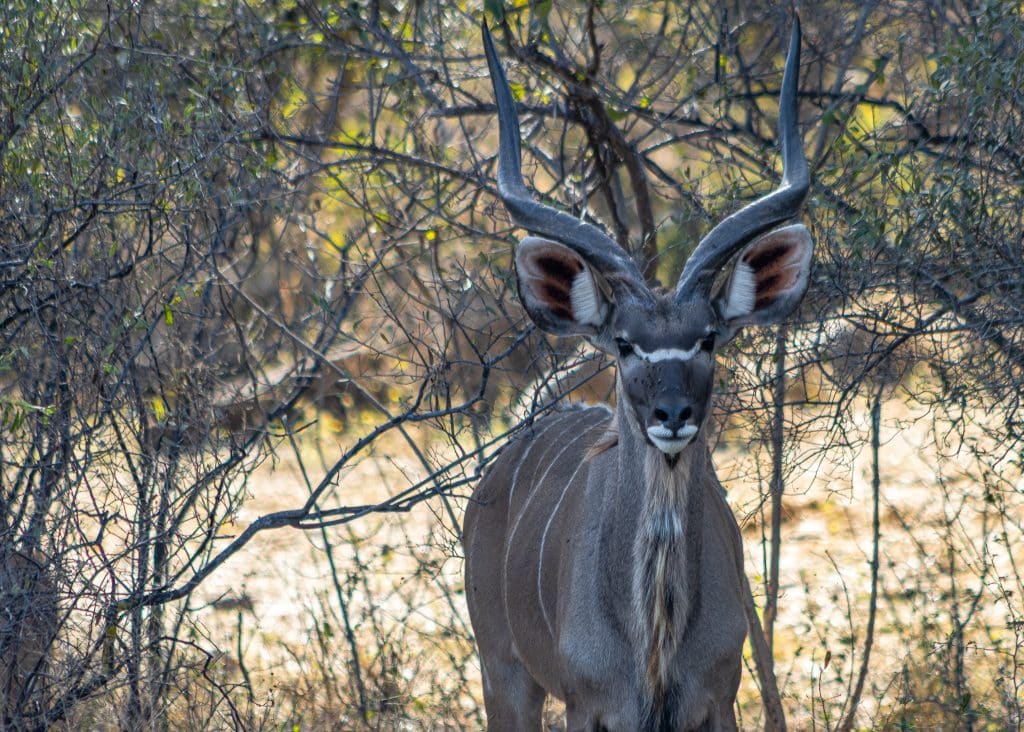
Mahango Core Area
Located near the western edge of Bwabwata, the Mahango Core Area is one of the park’s most accessible and wildlife-rich regions. With open floodplains, dense woodlands, and riverfront views, Mahango offers excellent game viewing without the crowds.
The park’s smaller size allowed for much closer animal encounters. Unlike Etosha, where animals were often far off in the distance, in Mahango, herds were frequently seen right by the roadside. The park is home to large game like leopards, elephants, cheetahs, hippos, and cape buffalo.

We had incredible cape buffalo viewing, including a few calves, which completed the boys’ Big Five sightings. I couldn’t help but feel slightly jealous since it took Derek and me 15 years to complete our Big Five sighting, while Jackson and Mason did it in just 25 days!
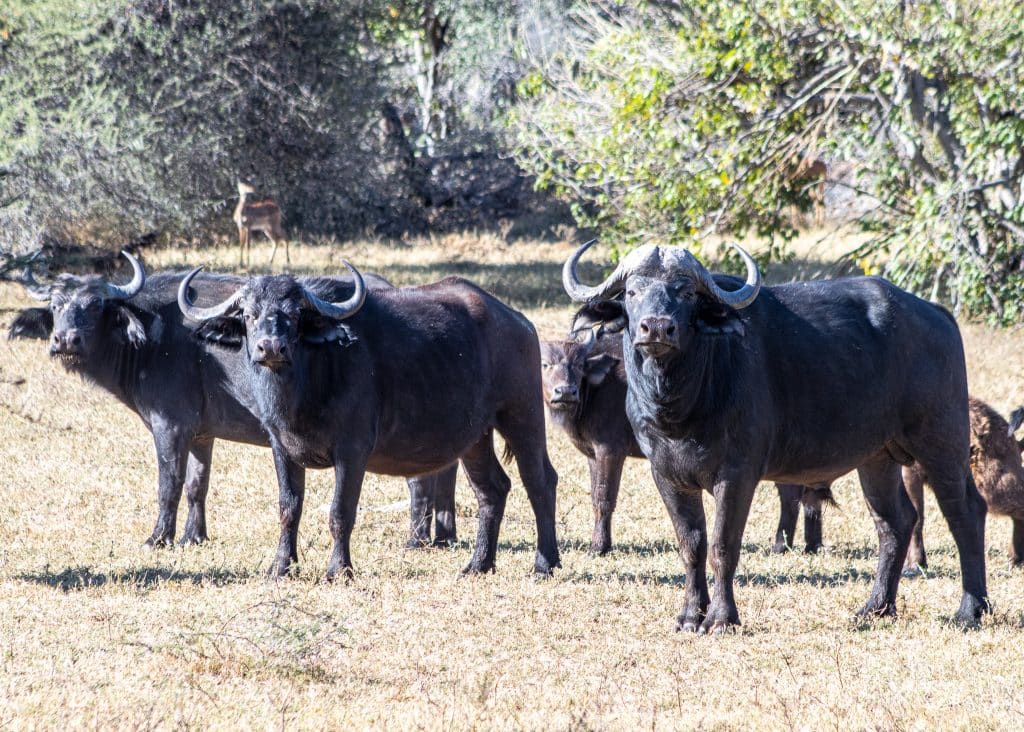
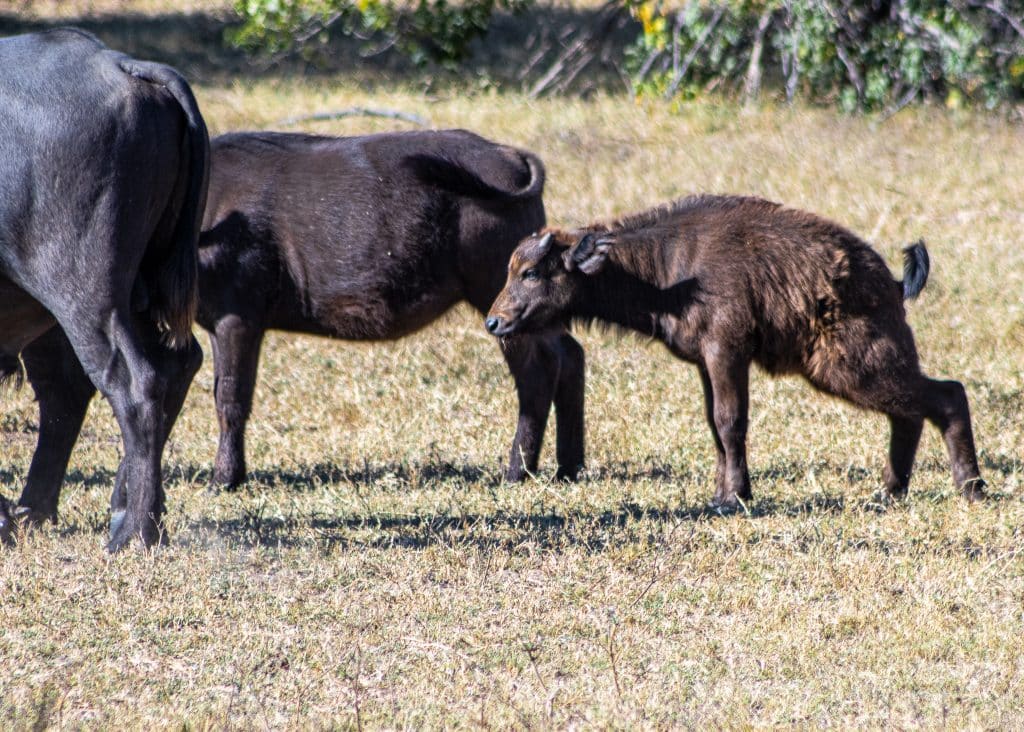
In addition to the buffalo, we saw over forty warthogs, giraffes, zebras, wildebeests, crocodiles, ostriches, and various antelope species.
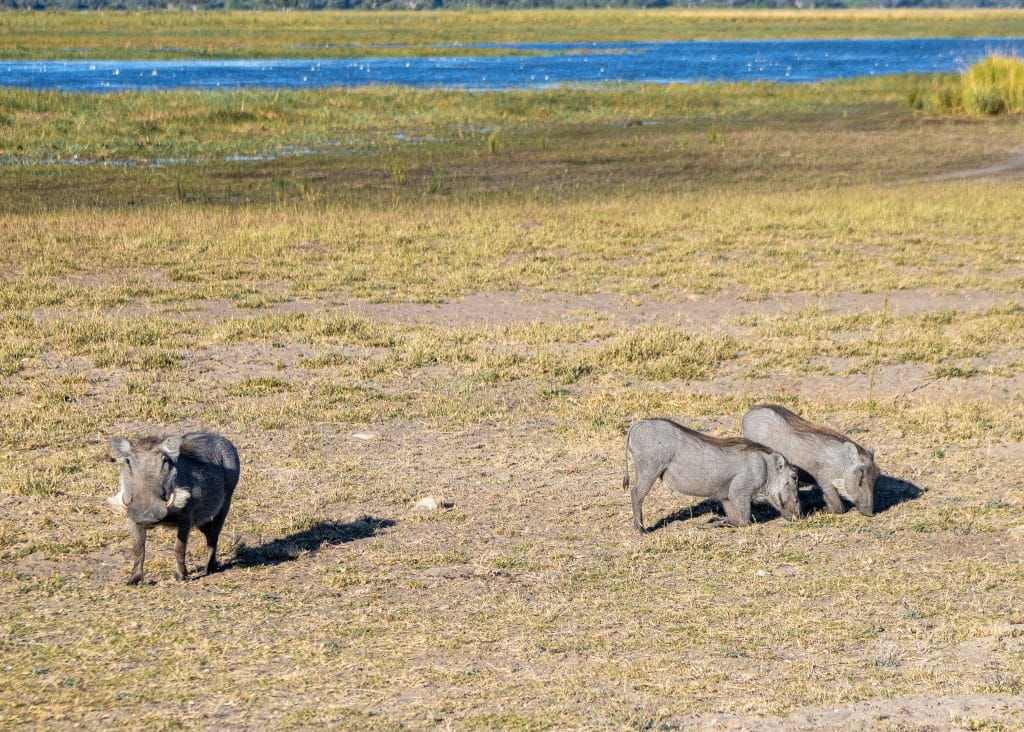
Buffalo Core Area
A short boat ride across the Kavango River brought us into the Buffalo Core Area, the quieter, wilder counterpart to Mahango. The wildlife here is similar—elephants, antelope, hippos—with the exciting possibility of lions. But spotting them takes patience, as the taller grasses and thicker brush make sightings more challenging.
Though we didn’t spot as many animals as the day before, we had a thrilling encounter with a family of elephants and their baby. Just as we were about to leave, a large elephant rushed out of the bush and trumpeted loudly, warning us to back off.
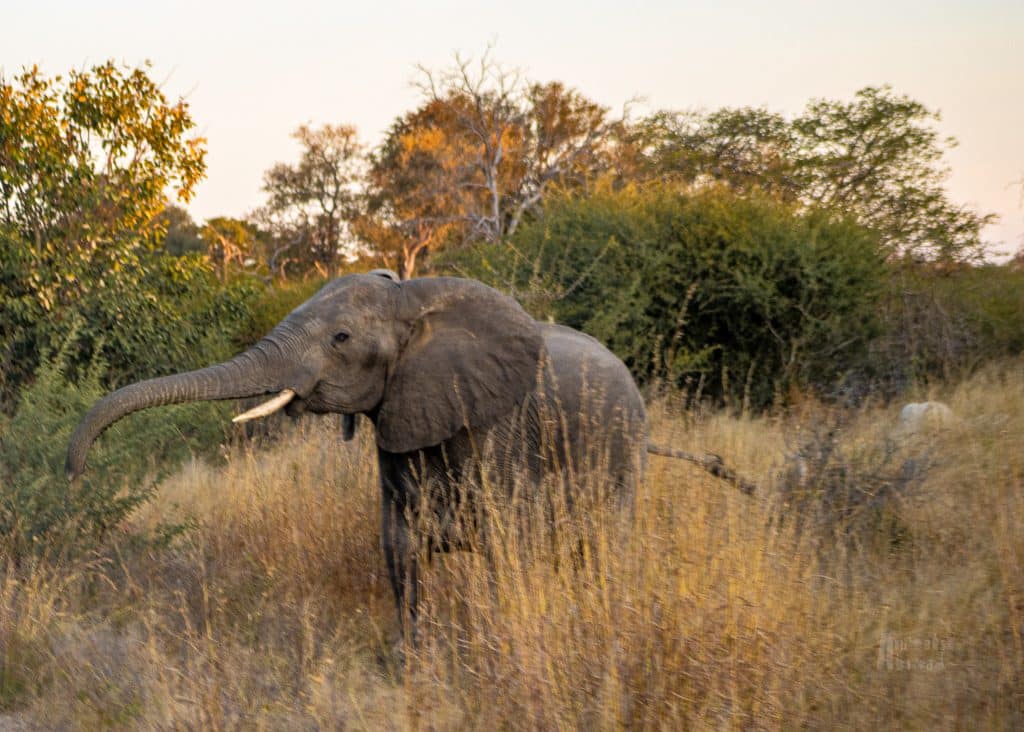
Where to Stay?
The campground we stayed at was Ndhovu Safari Lodge, Divundu. Located about 10 minutes away from the Mahango entrance and just across the Kavango River from the Buffalo Core.
Imagine waking up, sipping a hot cup of tea, and watching the Kavango River sparkle in the morning light. The sounds of distant splashes and grunts filled the air, and across the river, we watched a bloat of hippos bobbing in and out of the water, making their way onto land to graze and sunbathe. This was our experience at Ndhovu Safari Lodge.
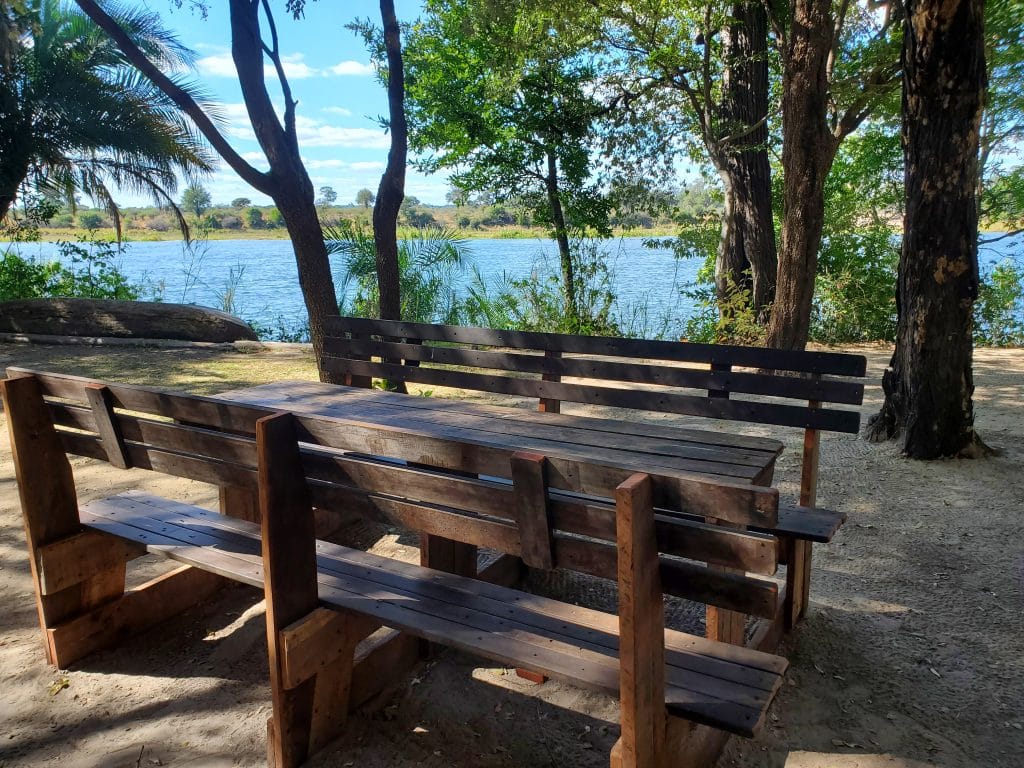
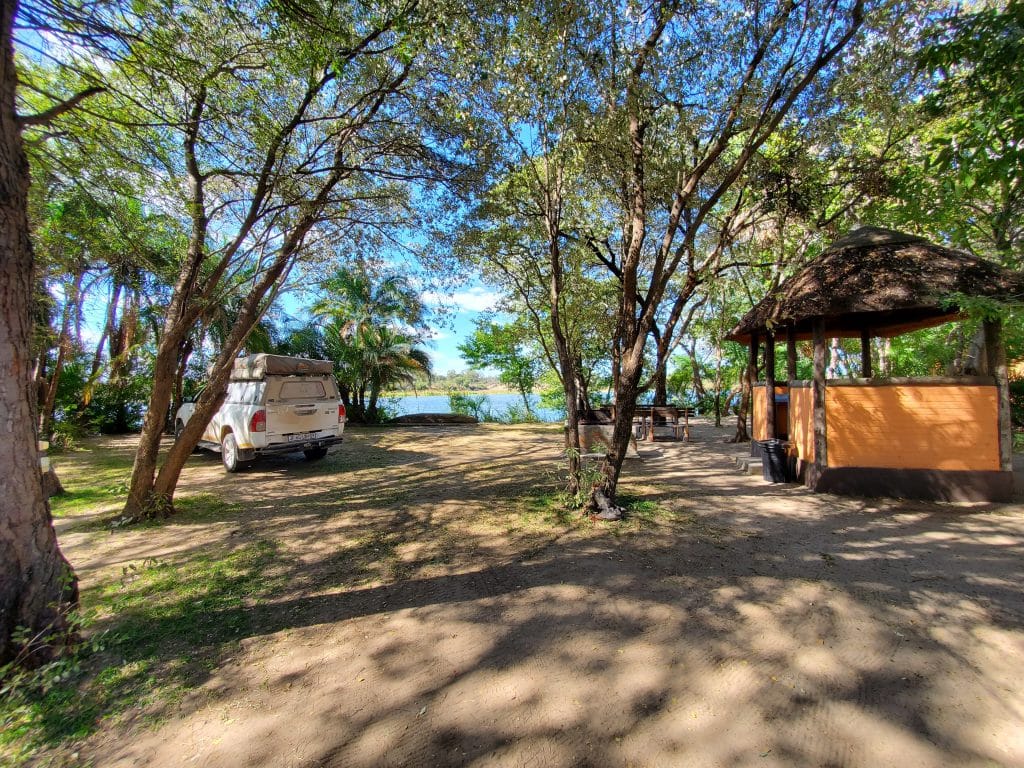
Each campsite at the Ndhovu Safari Lodge included a small fire pit and a covered wash area for dishes. There were two private bathrooms and shower rooms with hot water on demand. Wi-Fi was available at the reception/restaurant area. Laundry service was also available for a fee. For the kids, there was a pool and two adorable dogs to befriend.

Safety Tip: Hippos are known to wander through the campsites from dusk to dawn. Beware when walking at night. They are territorial and can be highly dangerous if they feel threatened. More people are killed by hippos each year than by any other animal in Africa. Never get between a hippo and the water.
Derek had a close call one morning. He was walking along the edge of the campsite, utterly unaware of how close he was to a hippo, until the hippo popped its head up and grunted loudly, sending Derek stumbling backward in surprise. Always be cautious and aware of your surroundings.
Nkasa Rupara National Park
Deeper in the Caprivi Strip, you’ll find Nkasa Rupara National Park. Remote and less visited, this park was some of the wildest terrain we encountered in Namibia. It is home to lions, leopards, elephants, hippos, and cape buffalo, but with a mix of dense forest and open plains, sightings don’t come easily. You’ll need patience and a bit of luck, but the sense of discovery makes it all worthwhile.
While we spotted several warthogs and a handful of impalas, the highlight of our day was a massive herd of cape buffalo grazing next to the road, giving us an up-close view.
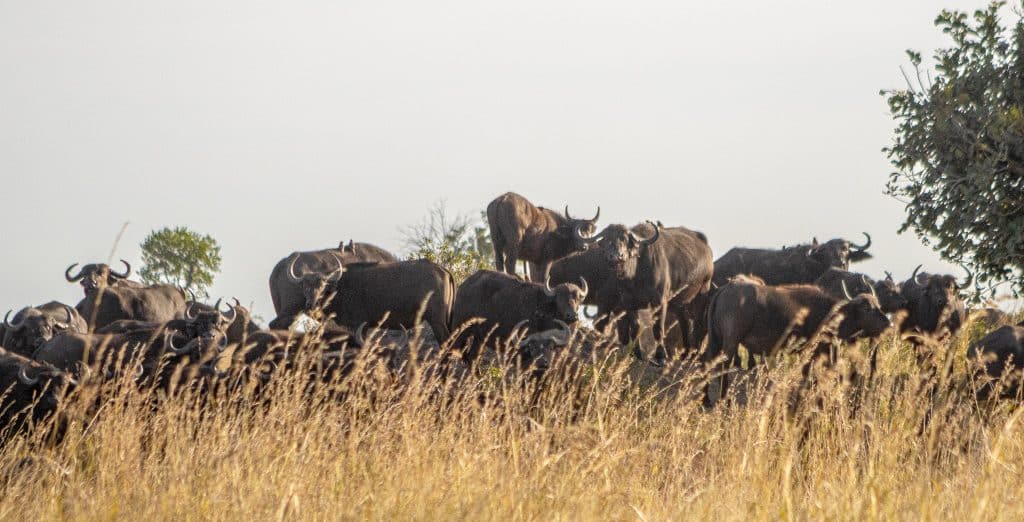

While the driving paths within the park are clearly marked, the roads are full of deep potholes and dips, making for a bumpy ride. This park may be impassable during the wet season, with many sections of the roads made of compact mud or soft sand.
Where to Stay?
Finding Livingstone Campground was challenging due to poorly marked roads and missing signage, which caused us to backtrack in search of the GPS signal. After a few detours, we arrived at a stunning campsite that opened to a vast grassy plain—perfect for game viewing. Just set up your chairs around the fire pit and wait for the animals to come to you..
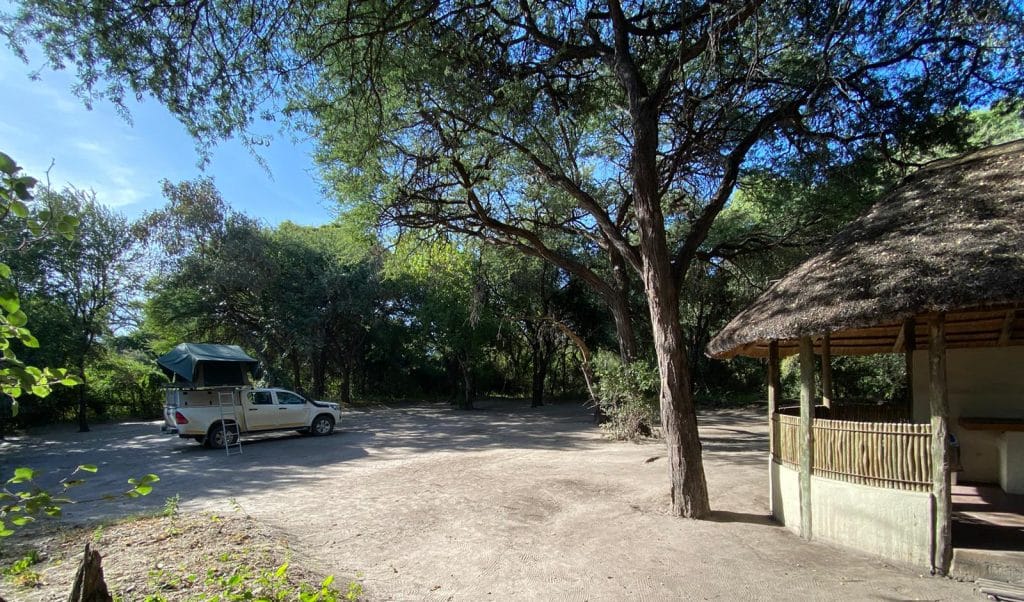
This Private campsite offered a large covered patio with a wash sink, outdoor seating, and a bathroom with hot water on demand. Solar panels powered the site, so lights and plugs were available to charge cameras and other electronics. There was no Wi-Fi. The park was unfenced, and animals, including hippos, elephants, and lions, were free to roam in and out of the campsite
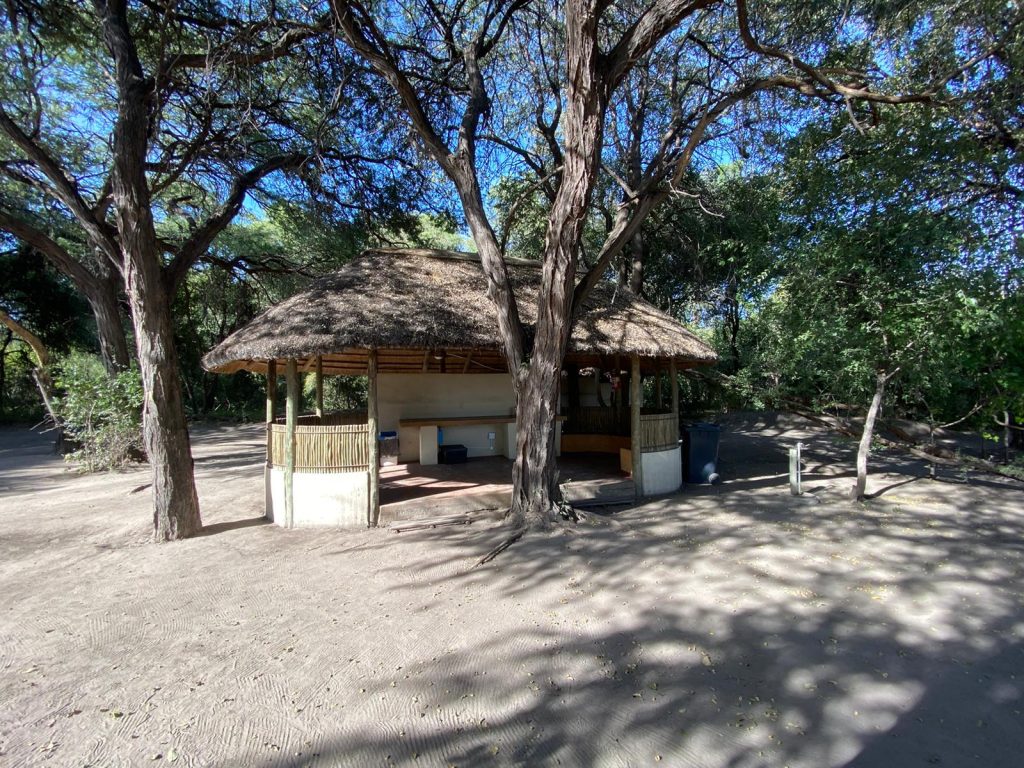
Driving Time: Approx. between the two campgrounds.
Roads: Paved highway.
Caprivi Houseboat Safari Lodge, Katima Mulilo
Katima Mulilo is the largest city in the Caprivi Strip and the closest to the Zambian border. As you enter Caprivi Houseboat Safari Lodge, it feels like you’re entering a jungle. Towering trees with dense canopies, thick vines in various shades of green, and large-leafed bushes block out much of the sunlight along the path.
The reception was the perfect place to rest and soak in the beauty of the Zambezi River. From here, you can easily spot crocodiles and hippos lounging near the banks.
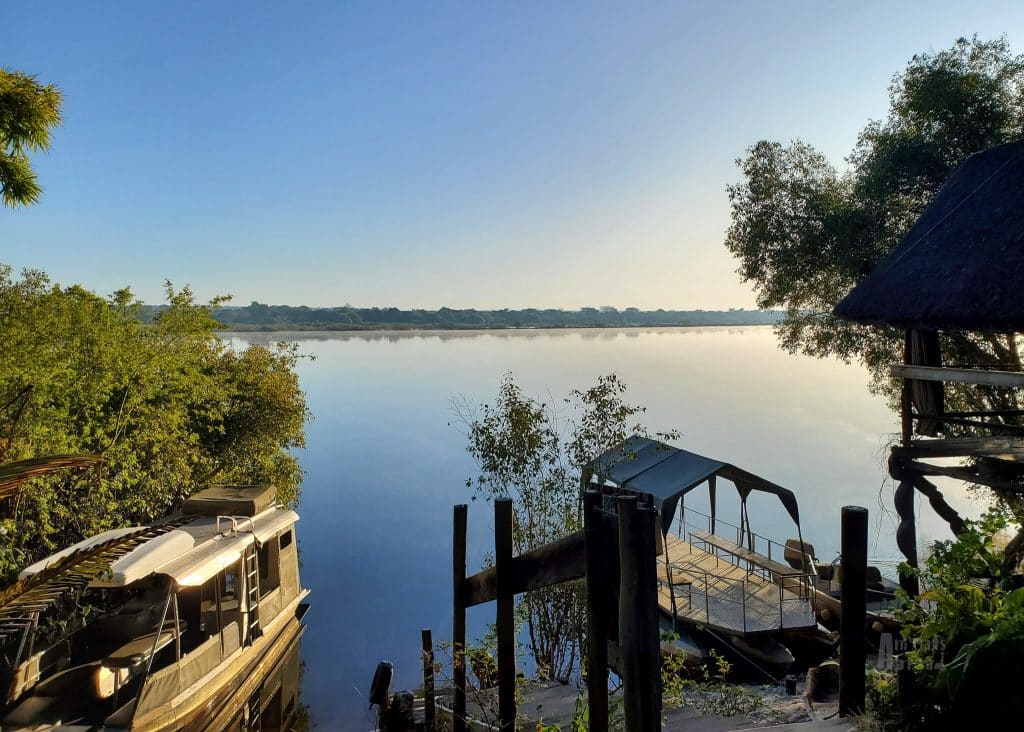
Tall straw stalks marked the boundaries of individual campsites at Caprivi Houseboat Safari Lodge, creating privacy. The sites were basic and equipped with a fire pit, power, and a wash sink. The camp provided firewood, and communal ablution facilities with hot water on demand were available. Wi-Fi was available at reception and reached the site.
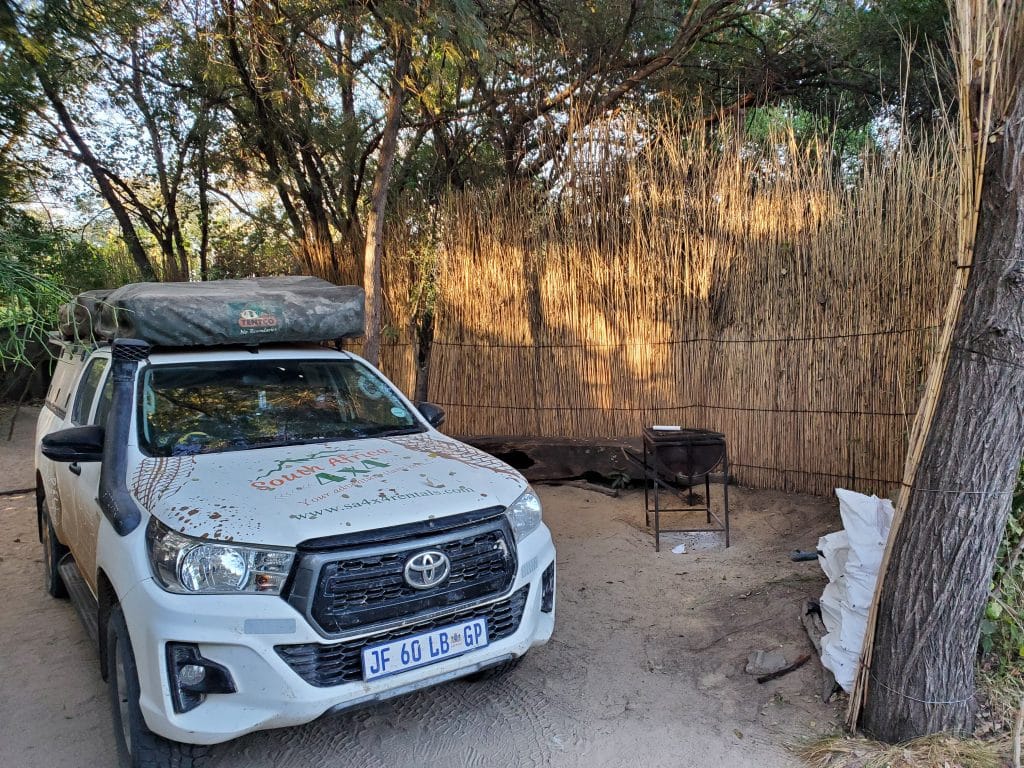
Up Next — Zambia
Tomorrow we will cross the border into Livingstone, Zambia and explore the wonders of Victoria Falls.
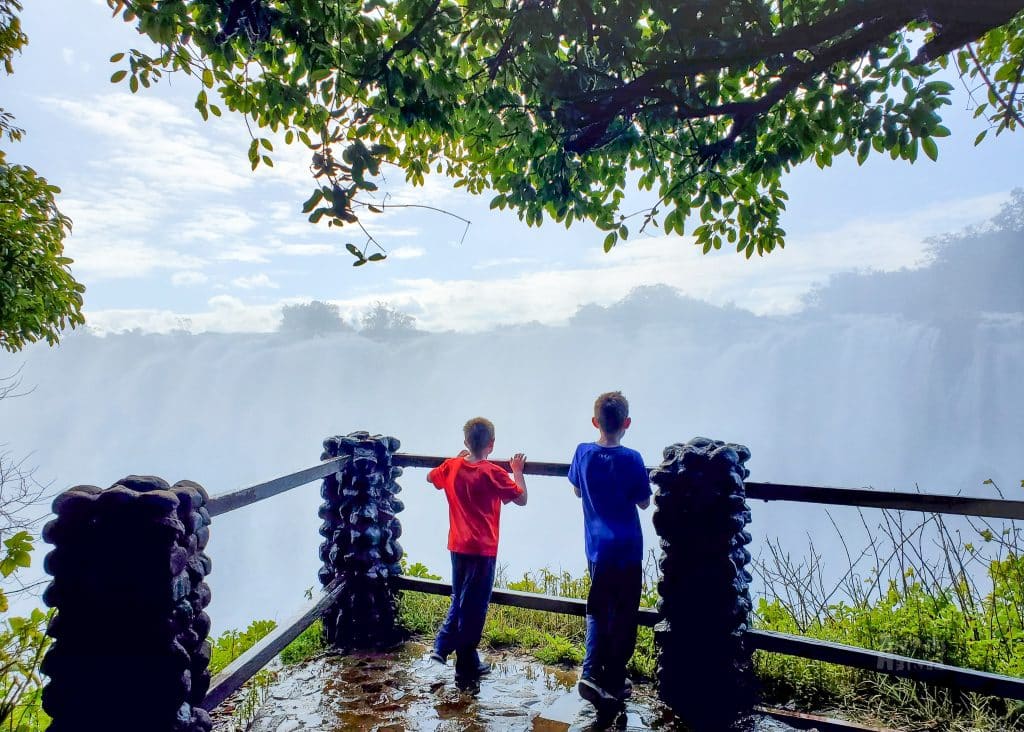
Ready to Create Your Own Wild Adventure?
Check out these related posts to help plan your trip:
- 51-Day Africa Safari – Part 1: South Africa & Namibia’s Coast
- 51-Day Africa Safari – Part 2: Namibia’s Etosha & Caprivi Strip
- 51-Day Africa Safari – Part 3: Victoria Falls & Botswana
- Our Best and Worst Day on Safari
- Camping Safari in Africa: Know Before You Go
- Camping Across Southern Africa: A Rundown of our Safari Campsites
- Navigating Border Crossings in Southern Africa
- Safari with Kids: Tips from the Road
- Etosha NP with Kids: A Family Safari to Remember
- Okonjima Family Safari: Where the Wild Things Wait
- The Smoke that Thunders: A Trip to Victoria Falls
- Into the Wild: Chobe NP with Kids
- Sunset Cruise on the Chobe River: A Photo Journey
- Living Giants: A Photo Journey Through Nxai Pan National Park
